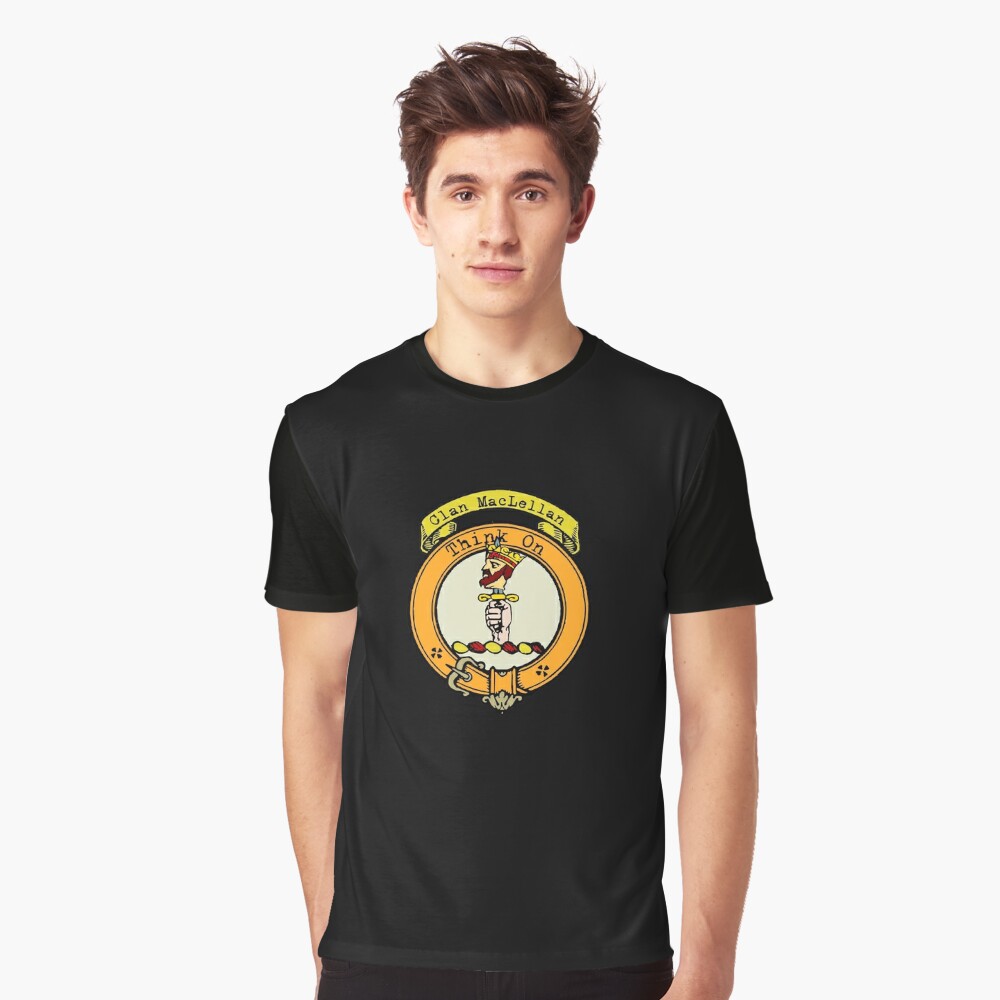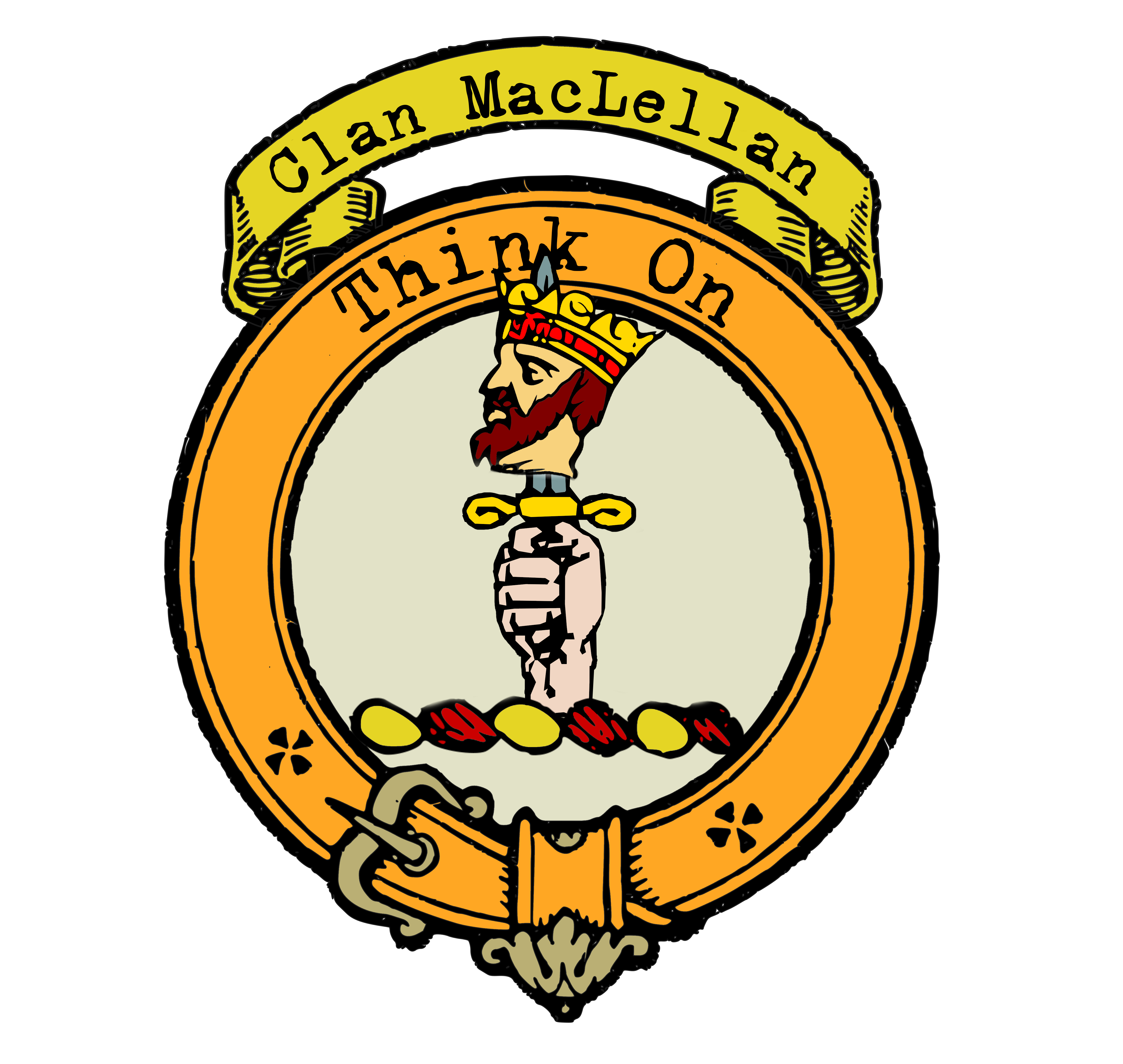Clan MacLellan Crest
|
|
CREST: A naked arm supporting on the point of a sword a moor’s head Proper MOTTO: Think on TRANSLATION: N/A VARIATIONS: McLellan |
| The name “MacLellan” traces its roots back to Gaelic origins, specifically from “MacGille Fhaolain,” signifying “son of the servant of St Filan.” St Filan, a revered missionary of the ancient Celtic church, left his mark on the heart of Scotland, immortalizing his name in the village of Perthshire. “Filan” itself derives from the Celtic word “faelchu,” translating to “wolf,” epitomizing the resilience and strength of the clan.
Throughout history, the MacLellans held a formidable presence in the region of Galloway. They bestowed their name upon the village of Balmaclellan in Stewartry, a testament to their local dominance. As early as 1217, a prominent figure named Duncan MacLellan was mentioned in a charter granted by King Alexander II, marking the beginning of the clan’s illustrious saga. |
|
 |
|
| Purchase @ Redbubble Purchase @ Amazon.com Purchase @ Amazon.co.uk |
|
| The MacLellans gained further prominence during the turbulent times of Scottish independence. Among the close confidants and loyal followers of the legendary Sir William Wallace, a valiant knight who fought for Scotland’s freedom, stood the brave MacLellan of Bombie. This association with Wallace elevated the clan’s standing and infused them with a sense of patriotism and determination.
During the fifteenth century, the MacLellans reached the pinnacle of their influence, boasting no fewer than fourteen knights bearing the MacLellan name in Galloway. Such a remarkable concentration of knights highlighted their prowess and importance in the region. As with many powerful clans, the MacLellans found themselves embroiled in fierce rivalries and tragic events. Sir Patrick MacLellan of Bombie faced the forfeiture of his estates after antagonizing the Douglases, the mighty Lords of Galloway. His son, Sir William, would later restore the family’s estates by capturing a notorious band of gypsies terrorizing the area, presenting the leader’s head to the king. The conflict with the Douglases culminated in the capture and subsequent murder of Sir Patrick MacLellan at the hands of the eighth Earl of Douglas, a vivid example of the tensions and complexities that characterized medieval Scottish society. The MacLellans continued to play significant roles in shaping Scotland’s history. Sir William MacLellan of Bombie received knighthood from King James IV and joined the ill-fated invasion of England, which culminated in the tragic Battle of Flodden Field in 1513. His son, Thomas, met his end in a dramatic confrontation with Gordon of Lochinvar at the door of St Giles’ Cathedral in Edinburgh in 1526. The MacLellans’ contributions to Scottish society were recognized when Sir Robert MacLellan was granted the peerage title of Lord Kirkcudbright in 1633. The MacLellan clan produced courtiers who served under James IV and Charles I, further solidifying their presence in Scotland’s history. |
|
Citations:
|
|
